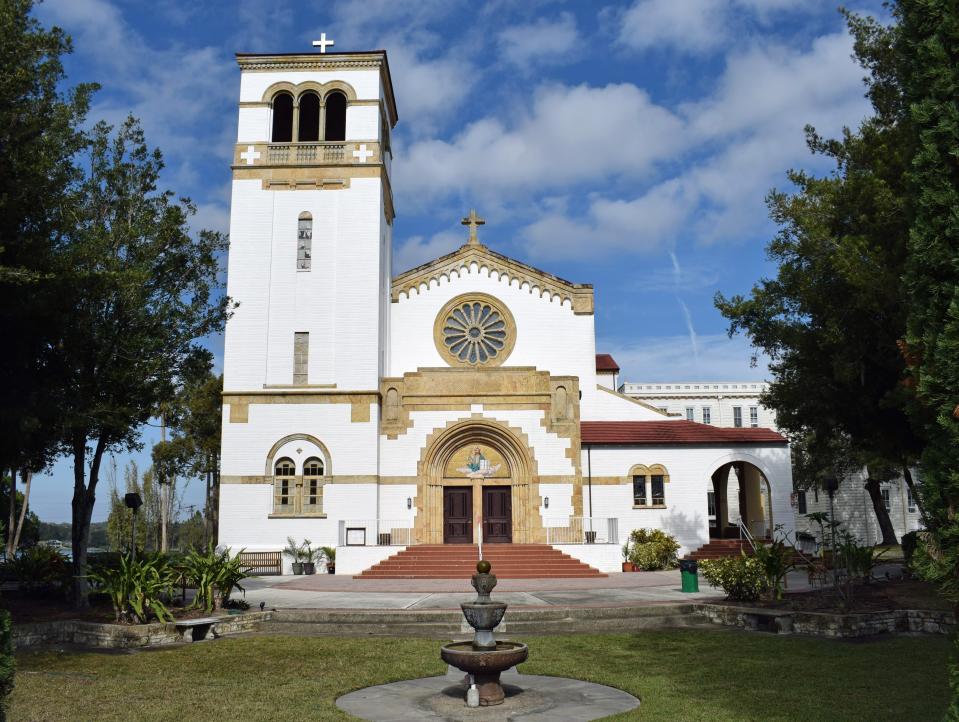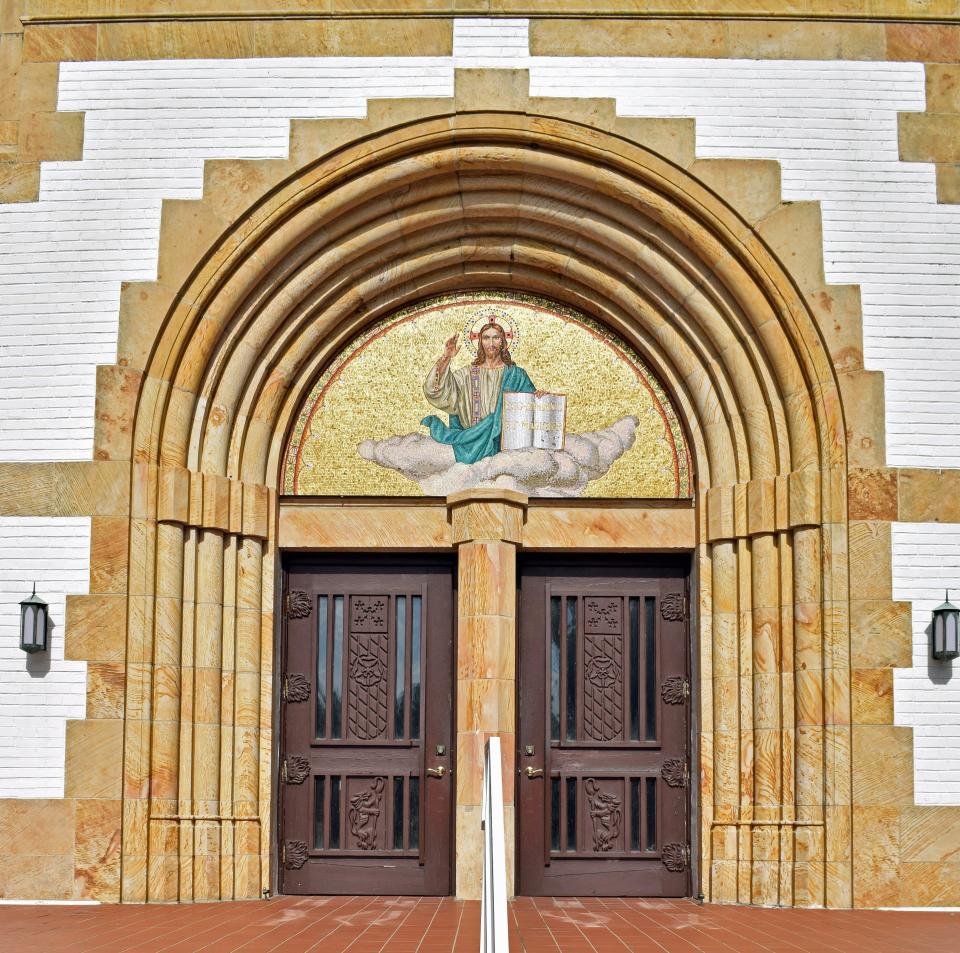Florida Buildings I Love, No. 121: Church of the Holy Cross, 1948, St. Leo

Central Florida has several picturesque small college campuses, each with its own architectural personality.
Rollins College in Winter Park, Stetson University in DeLand, Florida Southern College in Lakeland and the University of Tampa have architecture that ranges from Romanesque (Elizabeth Hall at Stetson), Frank Lloyd Wright’s personal interpretation of modernism (Florida Southern) and John A. Wood’s awe-inspiring, minaret-topped Plant Hall (UT).
But for charm and harmony with its setting, none of these notable campuses can surpass St. Leo University in Pasco County, 35 miles north of Tampa.
Founded in 1889, St. Leo University is one and the same with the town of St. Leo. Picturesque it is. The private Catholic college campus, which has an intimate campus plan with buildings in a variety of styles, drapes gracefully over a ridge that slopes down to Lake Jovita on the north.
The St. Leo Abbey Historic District, which was added to the National Register of Historic Places in 1998, contains three buildings, including the 1912 Benedictine abbey and the 1948 Church of the Holy Cross.
Although religious properties normally are excluded from the National Register of Historic Places, they can be included if they derive “primary significance from architectural or artistic distinction or historical importance,” according to NR regulations. “A religious property requires justification on architectural, artistic, or historic grounds to avoid any appearance of judgment by government about the validity of any religion or belief.”
The church was the last of three buildings in the historic district to be completed, in 1948 after 12 years of construction. But it has a special designation, as it is known as “the church that orange juice built.” St. Leo’s leaders traded oranges and grapefruit from their groves for sandstone from Saint Meinrad Abbey in Indiana.

But the sandstone was used just for accents. The McDonald Corporation of Brooksville contributed 50,000 limestone bricks for the walls of the church.
The church has 42 stained-glass windows, created by Karl Mueller Studio of Belleville, New York, and an organ that cost $12,000 in 1943.
The church, which has not been altered on the exterior, has a basilica plan and Italian Romanesque architectural features, including mosaic and painted decorations. It’s not ostentatious, but is dignified and totally appropriate for the setting.
“Florida Buildings I Love” is Harold Bubil’s homage to the Sunshine State’s built environment. This article originally ran on May 4, 2019.
This article originally appeared on Sarasota Herald-Tribune: Buildings I Love, Harold Bubil: No. 121: Church of the Holy Cross, 1948, St. Leo
